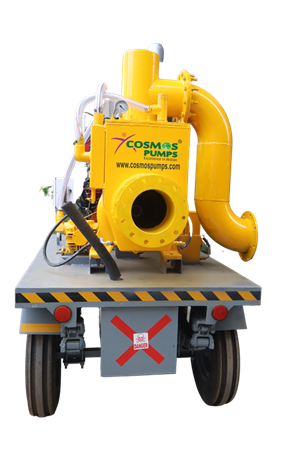
The challenge that is common in every construction site is how to deal with unwanted water. Regardless of the source of water, be it groundwater, rainwater, or seepage, the surplus water will stop operations, spoil materials and even jeopardise the safety of the area. This is where the drainage pump is essential. While these pumps are valuable in using sites by keeping them dry and functional, they also bear some safety responsibilities in their use. They can be dangerous electrically, mechanically and operationally when mishandled.
Proper safety and efficiency practices for drainage and dewatering pump systems will protect workers, but also will add longevity to the equipment and increase productivity.
Understanding the Role of Drainage Pumps on Construction Sites
Before going through safety practices, it is essential to know how a drainage pump works in a construction environment. They are pumps built to extract stagnant water in a trench, foundation, and low-lying areas to ensure that the working environment is stable and dry. In larger operations, they often work alongside dewatering pump systems to control groundwater and prevent flooding during excavation or concrete work.
The drainage and dewatering systems should be installed and used carefully because they are constantly exposed to moisture, heavy loads and electrical power. One negligence, such as poor grounding or overloading, may cause serious accidents, such as electrical shocks, pump breaking, or even flooding the site.
-
Risk Assessment Before Installation
Every site has unique conditions, soil type, water table depth, and weather patterns, which can all affect how a drainage pumps operates. Correct risk evaluation before installation can ensure the correct type of pump, capacity and safety measures are considered.
- Watch out for potential hazards such as unstable earth or electrical contacts.
- Make sure that the pump will fit the amount and type of water to be pumped out (clean, muddy or debris).
- Ensure that every employee knows the zones of safety as well as the functioning of equipment.
It is a preventive step that avoids unexpected issues in the operation and reduces downtime.
-
Adequate Electrical Safety Measures
Electric safety is paramount, given that drainage pumps usually rely on electric power. It is important to remember that moisture could result in shock or short circuits, and it is critical to:
- Use Ground Fault Circuit Interrupters (GFCIs) for all electrical connections.
- Store power cords or cables above the wet areas.
- Frequently check cables and cords for signs of damage or wear.
- Ensure that all electrical installations are properly sealed and insulated.
It is advisable for a licensed electrician to complete the installation and regular maintenance.
-
Correct Installation and Positioning
Incorrect placement is one of the most common causes of drainage pump failure. It is always necessary to have a stable, level surface on which the pump is placed to avoid clogging or tipping. Do not set the pump on muddy or trash-infested ground, but use a flat, solid surface or a mesh platform which will permit a free flow of water.
When using a dewatering pump, proper suction and discharge hose alignment are vital to maintain flow efficiency and prevent hose bursts or leaks. Also, ensure that the hoses are well attached and checked every day.
-
Ensure Accessibility and Openness
Drainage and dewatering pump systems are often installed in low-lying or confined spaces. To maintain safety:
- Ensure that the pump area is well-lit and hygienic.
- Protection or caution signs should be used to prevent unauthorised access.
- Materials and tools should not be stored around the pump system.
The ease of access can ensure that, in the event of a malfunction or flooding, this system can be checked or disconnected easily.
Safety is an Ongoing Investment
Using a drainage pump effectively on construction sites is not just about performance but also about safety, responsibility, and foresight. These best practices can help site managers to reduce risks, secure workers, and maintain continuous operations.
Remember, every safe and efficient dewatering pump setup contributes to a more productive and secure construction environment.

